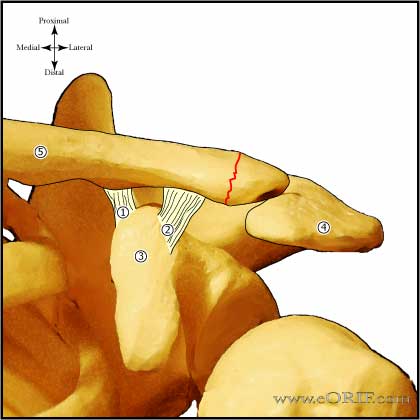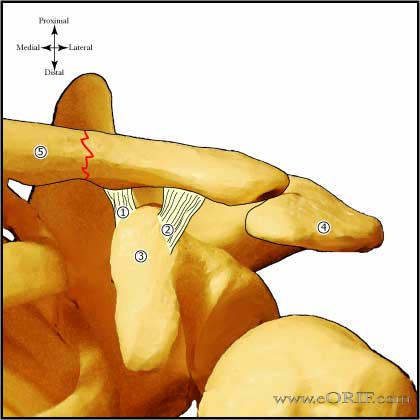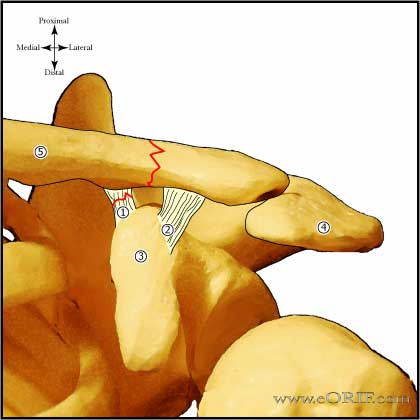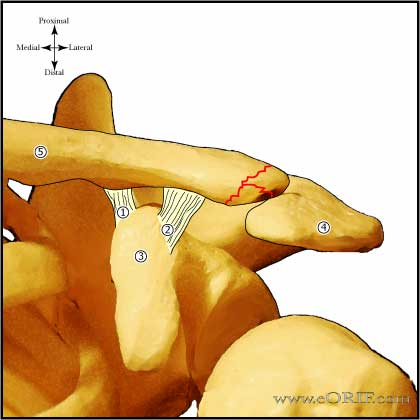 |
Type I
- distal to the coracoclavicular ligaments.
- Coracoclavicular ligaments remain intact,
- Displacement uncommon.
- Treatment = sling.
- Conoid ligament
- Trapezoid ligament
- Coracoid process
- Acromion
- Clavicle
|
 |
Type IIA
- medial to the coracoclavicular ligaments.
- Medial fragment frequently displaces superiorly.
- Nonunion is frequent.
- Treatment = ORIF. Consider hook-plate fixation (Haider SG, JSES 2006;15:419). Consider non-absorbable suture fixation. (Levy O, JSES 2003;12:24).
- Conoid ligament
- Trapezoid ligament
- Coracoid process
- Acromion
- Clavicle
|
 |
Type IIB
- Between the coracoclavicular ligaments.
- Medial fragment frequently displaces superiorly.
- Nonunion is frequent.
- Treatment = ORIF. Consider hook-plate fixation (Haider SG, JSES 2006;15:419). Consider non-absorbable suture fixation. (Levy O, JSES 2003;12:24).
- Conoid ligament
- Trapezoid ligament
- Coracoid process
- Acromion
- Clavicle
|
 |
Type III
- Intra-articular, frequently without ligament disruption.
- Generally little or no displacement.
- Frequently missed or misdiagnosed as acromioclavicular joint injuries.
- May lead to AC arthritis.
- Treatment = sling. Consider distal clavicle excision for patients who are symptomatic at 6-12 months after injury.
- Conoid ligament
- Trapezoid ligament
- Coracoid process
- Acromion
- Clavicle
|







